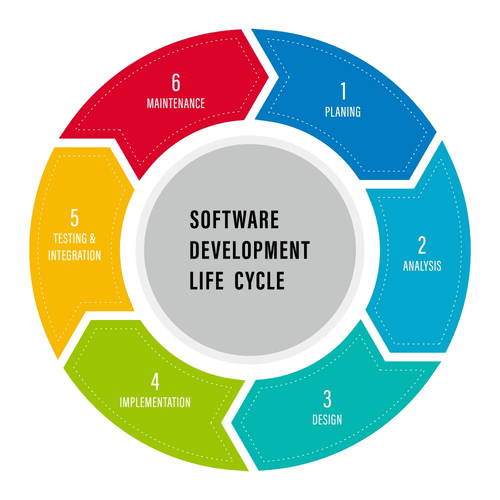As a brand new project section starts new teams are fashioned and the members will undergo the stages. New group members becoming a member of established teams will go through a very private model of the stages as they settle in. The transition between these varied phases requires intentional guidance and facilitation by the staff chief. Within a high-performing staff, there’s an appreciation of the necessity for a stability of communication kinds, and of balancing the intuitive and logical mind. The logical mind helps individuals solve issues and stay on task. The intuitive mind allows individuals to identify what they’re feeling.
And its success or failure very a lot hinges on the data and talent of its management. When leaders enable teams to type and develop with unrealistic expectations or too little oversight, bad things can happen. Conversely, when leaders recognize that every staff needs a while and TLC to develop right into a functional unit, good things are inclined to comply with. To enhance your team’s performance four stages of group development, step one to your journey is to know the place you’re starting from. To do that, Team Journeys is providing a free Team Assessment, whereby the outcomes might be reported to you and will present you with a transparent image of your team’s current improvement stage. The interventions we prescribe will depend upon our findings through the evaluation.
Confront Battle In A Healthy Method
When teams are formed, they undergo predictable levels of growth. Recognising, understanding and responding to this development and performance ‘curve’ has the flexibility to remodel good teams into great ones. Leaders need to be prepared to effectively coach group members by validating their considerations and providing tangible resolutions.

This is the second stage of staff improvement, the place the group begins to type itself out and acquire every others’ belief. This stage usually starts once they voice their opinions; battle might come up between team members as energy and status are assigned. At this stage there’s typically a optimistic and well mannered environment, people are pleasant to each other, they usually might have feelings of pleasure, eagerness and positiveness.
Select Studying Subject
The roles and boundaries are typically unclear on the Storming stage. Team members could not just like the work style of their new colleagues, challenge the emerging staff norms and resist control. Managers should ensure that the group norms are discussed, accepted, and adopted by each group member. As a project progresses by way of completely different phases some group members will go away the project, others will be part of and a few will transfer into new positions throughout the project. There is little intervention needed from management at this stage, but it is necessary to continue offering support where needed to stop the staff from lapsing back into the storming stage.
- His descriptions of Forming, Storming, Norming and Performing provide a helpful framework for taking a glance at your individual teams’ performance.
- Norms turn into a method of simplifying selections and facilitating collaboration, since members have shared expectations about how work will get done.
- The leader ought to concentrate on her or his position as a facilitator and trust-builder.
- Engineering administration, management, software architecture, high-performing teams, professional progress.
- She says that she met with every team member individually and defined their function within the project and gave them a chance to share any concerns they had.
- The staff comes up with an thought to focus the coaching on five eventualities often discovered in the hospital.
To grow from this stage to the following, each member must relinquish the comfort of non-threatening matters and risk the potential for battle. Building a team from the bottom up comes with its personal challenges and rewards, however knowing how it will develop might help you navigate the method. Tuckman’s four levels of staff growth provide a framework to assist you understand your staff and extra effectively reach your goals.
Let’s call these small shifts microevents, and you’re prone to see a lot of these throughout the teams’ time collectively. As with all of the stages it may be very important acknowledge that forming happens each time a model new group is created. In a typical Rizing engagement teams are fashioned and dissolved throughout the project lifecycle therefore the continuing want to supply management and steering.
They must setup an effective process to resolve conflicts that can arise during this stage. If staff members train understanding, tolerance, and endurance, they’ve a fantastic chance of creating it by way of essentially the most troublesome stage. These development stages present up repeatedly on an SAP project, not solely when it begins however throughout as phases, deliverables and personnel change. Bruce Tuckman was a Professor Emeritus of Educational Psychology at Ohio State University. In the mid-1960s, he launched his model of the 4 phases of group improvement.
Performing
The chief of the team will then describe the tasks to the group, describe the completely different behaviours to the group and the way to deal and deal with complaints. Tolerance of every staff member and their differences should be emphasised; without tolerance and persistence the group will fail. This part can turn out to be damaging to the staff and will lower motivation if allowed to get uncontrolled. Some teams will never develop past this stage; nevertheless, disagreements throughout the staff could make members stronger, extra versatile, and able to work extra effectively together. Supervisors during this part may be more accessible, however tend to remain directive in their steerage of decision-making and professional behaviour. The staff members will due to this fact resolve their variations and members will be ready to participate with one another more comfortably.
With a better grasp of shared objectives and solidified group construction, members will feel a more profound sense of camaraderie and shared responsibility for the project. The first stage of team growth consists of the staff coming collectively, or forming. During this stage, members focus primarily on how they match into the group, as they try to achieve acceptance inside the staff. Because of this, there could be a lot of particular person insecurity at the beginning. Members want their teammates to see them as competent and deserving individuals and as someone who could make a real impression on the staff. With everybody trying to match in, the communication throughout this stage is usually in a well mannered method, so members could additionally be much less inclined to voice their own opinions.

The group decides that the coaching must be video-based and on-line, making it easier for folks to attend. They stress that interaction is crucial to each learning and satisfaction. The staff decides that the training should focus on asking members questions instead of lecturing them.
You need to develop a keen sense of belonging in each member. Creating a team charter is a good software to assist your group, as is conducting completely https://www.globalcloudteam.com/ different kinds of “get to know you” activities. The preliminary stage is often marked by a combination of attitudes and emotions.
A leader’s position at this stage is to encourage cooperation, leverage the strengths of every individual and, again, determine and resolve conflicts earlier than they get out of hand. Encourage members to roll up their sleeves and work collaboratively. At this stage, having the talents to facilitate open dialogue and enforce accountability is critical.
As you build a brand new team, maintain the stages of team improvement in mind so you can assist particular person staff members attain their full potential and collaborate together effectively. While there’s no one proper way to assist your group, try these four strategies to boost your group’s cohesiveness. As a staff leader, it’s your aim to support and empower your group to help get their highest-impact work accomplished. When your group members feel comfortable with each other, it’s easier to collaborate and work together. Alternatively, in case your staff is having challenges meshing, it might take them longer to get work carried out.
They can depend on one another to do the onerous work they have been employed to do, regardless of any variations that arise. The fifth stage of group growth, also identified as the mourning stage, is the final stage a group will undergo. After a project is over or if a staff is disbanded, team members who worked together will go into a small mourning interval. Group members might have a hard time working with different groups as they’d strong group dynamics with their earlier staff. Boost motivation by helping your staff perceive why their work issues. In this free e book, learn to create a shared sense of function in your team.
High Potential Leaders Can Certainly Lead Teams, Right?
All the team members are very enthusiastic about their accomplishments. Chris then asks the group to give you as many loopy solutions as possible. They resolve to make use of the round-robin strategy this time and everyone eagerly participates.
Storming starts when conflicts and competitors emerge within the team. At this stage, the team targets might already be clear, though its members may have completely different views on one of the best ways to realize them. Managers ought to help the group consider everyone’s viewpoint and permit every member to contribute to related staff discussions. Reaching consensus on every issue that requires a debate is essential — compromises won’t help in the long run.

0 Comment on this Article